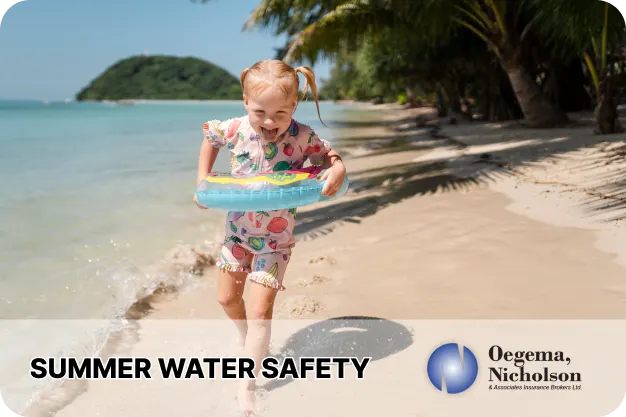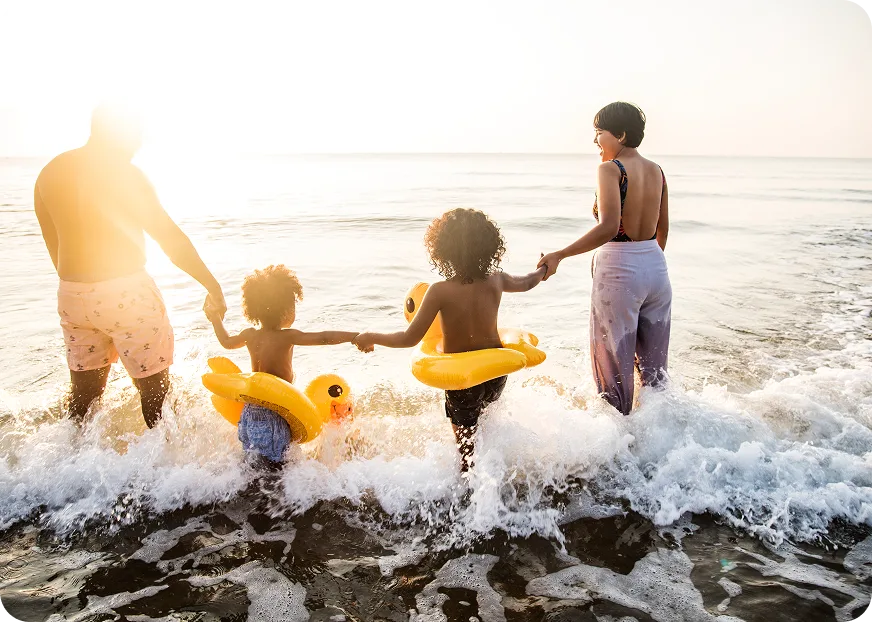Summer always seems like it goes by too quickly, so as Canadians, we love to make the most of it. Heading to a local beach, cottage, or community pool is something that the majority of Ontario residents will do at least once or twice during the summer months. Unfortunately, it’s an activity that’s not without its hazards; every summer in the news media we read and hear about tragic stories of drowning deaths. The loss of life is incredibly sad on its own, made worse by the fact that so often, they are preventable situations.

There are a number of simple steps you can take to ensure that it’s a safe, enjoyable summer in the water for all your family and friends:
- Familiarize yourself with basic lifesaving procedures, including CPR and protocols for helping retrieve people from the water.
- Do not go swimming alone; even if you consider yourself an excellent swimmer, you never know what can happen in terms of a medical attack, rising waves, undercurrents, etc.
- Avoid mixing alcohol with water activities. According to the Red Cross, “Alcohol impairs judgment, balance and coordination; affects swimming and diving skills; and reduces the body’s ability to stay warm.”
- If going out in a boat (especially a canoe, kayak, etc.), wear a lifejacket, regardless of perceived swimming ability.
This goes without saying, but always bears repeating: children require special attention around the lake water. Just because a child knows how to swim does not exclude them from the risk of drowning.
- Constant supervision from an adult is a must. That means having an adult’s eyes on the child at all times.
- There should be clear rules and guidelines established with children from the youngest age possible that they are not allowed to be at the lake area near the water without an adult, and never allowed to swim without supervision.
- Young children should wear approved, properly-sized life jackets at all times anywhere around water.
- Pool noodles, flutterboards, etc. can potentially lull caregivers into a false sense of security; they should not be used in place of a proper life jacket.
- On that note, some lifesaving organizations advise against inflatable armbands for children, commonly known as water wings. The main issues they have with them is that they can potentially fall off of the child’s arms without anyone noticing, putting the child at danger.
Maintaining a Safe Pool Area
The Government of Canada’s Healthy Canadians initiative recommends the following guidelines to ensure that your pool area is safe, and equipped to keep children out:
- A fence at least 1.2 metres in height that completely surrounds the pool;
- A self-closing gate containing a latch that is out of the child’s reach;
- Easily accessible lifesaving equipment and first aid equipment around the pool;
- A pool cover that is secure and covers the pool at all times when it is not in use;
- Do not leave any objects that children can climb on to get over the fence.
Enjoy the summer while it lasts, and keep it safe for your loved ones! Thanks for reading, The ONA Team.






